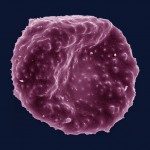Link to Pubmed [PMID] – 16474071
Am. J. Trop. Med. Hyg. 2006 Feb;74(2):205-10
We determined the baseline frequency distribution of mutant alleles of genes associated with resistance to chloroquine and sulfadoxine-pyrimethamine in Plasmodium falciparum isolates in Bangui, Central African Republic. Mutant alleles of the P. falciparum chloroquine resistance transporter (pfcrt) gene were found in all samples and the frequency of the deduced CIET pfcrt haplotype was high (45%). The most common allele of the P. falciparum multidrug resistance 1 (pfmdr1) gene among the field isolates of P. falciparum was 86Y (21.9%). The 1246Y allele was also common (18.0%). Of the 167 P. falciparum isolates in which the dihydrofolate reductase gene was studied, only 11 carried the wild-type allele (6.6%) whereas many (50.3%) were quadruple mutants (50R, 51I, 59R, 108N). The frequency of the 436A mutant allele of the dihydropteroate synthase gene was high (74.3%), but the frequencies of the 437G (18.6%) and 540E (5.2%) mutant alleles were low. Molecular analyses of antimalarial drug-resistant alleles of P. falciparum isolates in Bangui strongly suggest the widespread distribution of chloroquine and pyrimethamine resistance and to a lesser extent sulfadoxine resistance.

